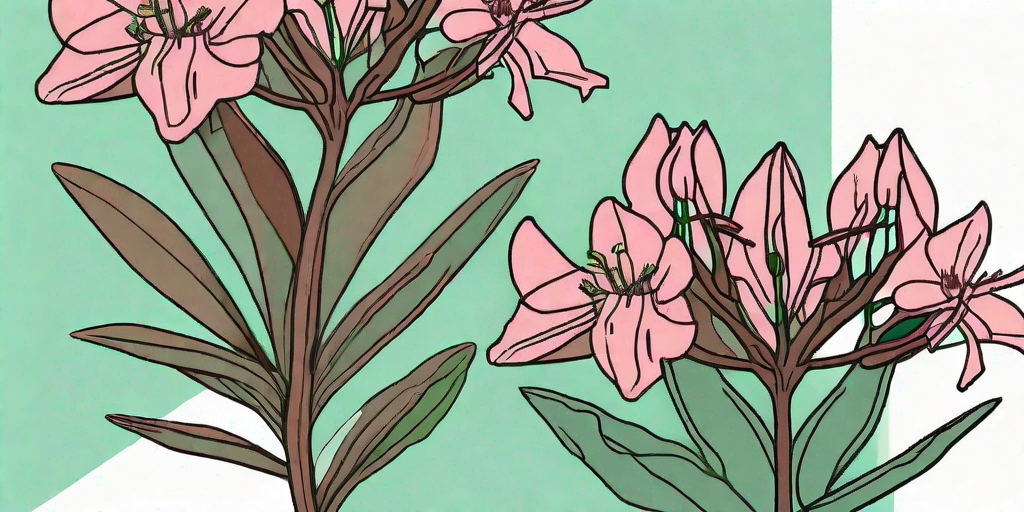
The rhododendron, a plant that's as fun to say as it is to grow. These leafy wonders are the pride and joy of many a green thumb. But what happens when your rhododendron leaves start to look more like a chocolate bar than a vibrant plant? Fear not, fellow plant lovers, for we have the solutions to your brown leaf blues.
Understanding Your Rhododendron
Before we dive into the nitty-gritty of plant care, let's take a moment to understand our leafy friends. Rhododendrons are part of the Ericaceae family, which is just a fancy way of saying they're related to blueberries and azaleas. They're known for their large, vibrant flowers and their broad, evergreen leaves. But when those leaves start to turn brown, it's a sign that your plant isn't feeling its best.
There are a few reasons why this might be happening. It could be due to environmental factors, like too much sun or not enough water. It could also be a sign of disease or pest infestation. But don't worry, we're not here to diagnose your plant with a terminal illness. We're here to help you nurse it back to health.
Reviving Your Rhododendron
Now that we've gotten to know our rhododendrons a bit better, let's get down to business. Here's how you can say goodbye to brown and hello to green.
Water Wisely
Like most plants, rhododendrons need water to survive. But they're a bit picky about how they like their H2O. Too much water and they'll drown, too little and they'll dry out. The key is to keep the soil consistently moist, but not waterlogged. If the leaves are turning brown, it might be a sign that your watering habits need a bit of tweaking.
Try watering your rhododendron early in the morning or late in the evening when the sun isn't as strong. This will help the water to soak into the soil instead of evaporating. And remember, it's better to water deeply and infrequently than to give your plant a little sprinkle every day.
Shade is Your Friend
Rhododendrons love the sun, but too much of a good thing can be harmful. If your plant's leaves are turning brown, it might be getting sunburned. Yes, plants can get sunburned too! Try moving your rhododendron to a location where it will get a mix of sun and shade throughout the day.
Keep in mind that rhododendrons prefer morning sun and afternoon shade. This way, they get the light they need without the harsh afternoon rays. If you can't move your plant, consider installing a shade cloth to protect it from the sun.
Check for Pests and Disease
Unfortunately, rhododendrons can be susceptible to a variety of pests and diseases. If your plant's leaves are turning brown and falling off, it might be under attack. Common culprits include root rot, leaf spot, and the dreaded rhododendron borer.
Take a close look at your plant and its surroundings. Do you see any bugs or signs of disease? If so, you might need to take action. This could involve treating your plant with a pesticide or fungicide, or in severe cases, removing and disposing of the affected plant to prevent the disease from spreading.
Preventing Future Problems
Now that we've covered how to revive your rhododendron, let's talk about how to prevent these problems from happening in the first place.
Choose the Right Location
Location, location, location. It's not just important in real estate, it's crucial for plant health too. Rhododendrons prefer well-drained, acidic soil and a location that gets a mix of sun and shade. If you're planting a new rhododendron, take the time to find the perfect spot. Your plant will thank you.
If you're dealing with an established plant that's not doing well, consider whether it might be happier in a different location. Yes, moving a plant can be a bit of a hassle, but it's worth it if it means saving your rhododendron.
Feed Your Plant
Just like us, plants need food to thrive. For rhododendrons, this means a slow-release, acidic fertilizer. Apply it in the spring and again in the fall to give your plant the nutrients it needs to stay healthy and green.
But remember, more isn't always better. Over-fertilizing can lead to salt buildup in the soil, which can harm your plant. Follow the package instructions and your rhododendron will be just fine.
FAQs
Still have questions? Don't worry, we've got answers. Here are some of the most frequently asked questions about rhododendron care.
Why are my rhododendron leaves turning yellow?
Yellow leaves can be a sign of several issues, including over-watering, under-watering, or a nutrient deficiency. Check your watering habits and consider testing your soil to see if it's lacking any essential nutrients.
How often should I water my rhododendron?
There's no one-size-fits-all answer to this question, as it depends on your climate, soil, and the specific needs of your plant. However, a good rule of thumb is to water when the top inch of soil is dry.
Can I prune my rhododendron?
Absolutely! Pruning can help promote growth and improve the overall health of your plant. Just be sure to prune after your rhododendron has finished blooming to avoid cutting off next year's flowers.
Conclusion
And there you have it, folks. With a little bit of knowledge and a whole lot of love, you can say goodbye to brown and hello to green. So go forth and revive your rhododendrons. They're counting on you!















